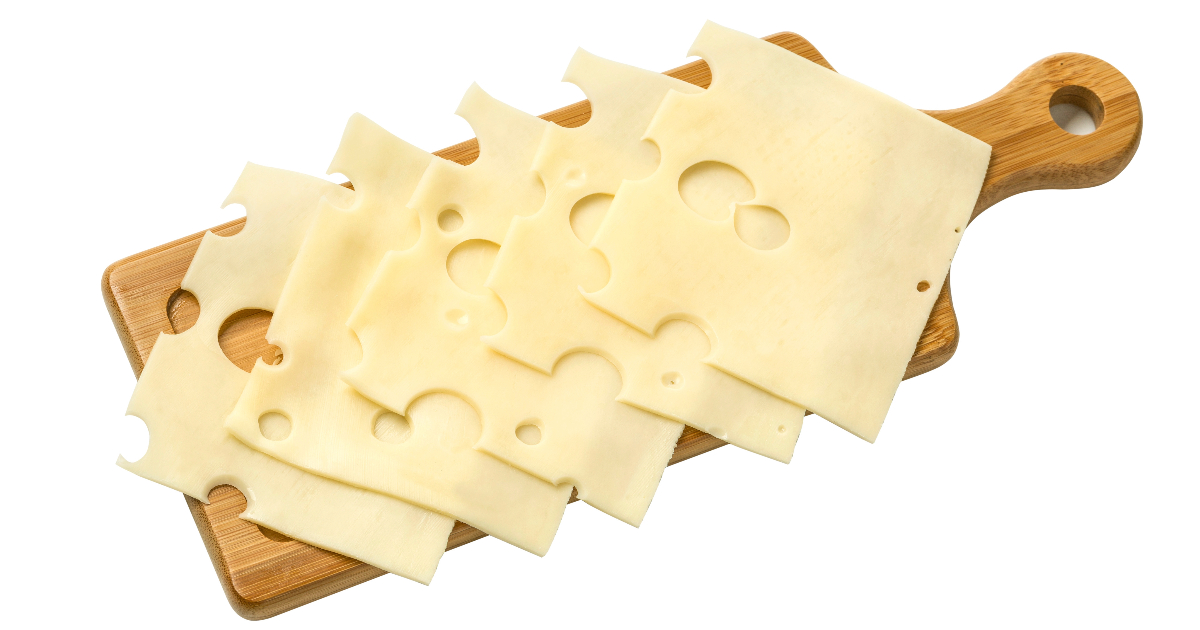Emmental and Parmesan are two classic cheese varieties that have delicious differences.

Emmental, sometimes called Swiss cheese, is known for its pale yellow color and large holes.
Parmesan is an Italian hard cheese that is usually grated.
Origins of Emmental and Parmesan
Emmental traces its roots to Switzerland, specifically to the Emme River valley region of canton Bern. It gets its characteristic holes from carbon dioxide released during the cheesemaking process from bacteria consuming lactic acid. True Emmental uses raw cow's milk and must come from Switzerland.
Parmesan originated as Parmigiano-Reggiano in the Italian provinces of Parma, Reggio Emilia, Modena, and parts of Mantua and Bologna. It also begins with raw cow's milk. Only cheeses made in this legally defined area can use the Parmigiano-Reggiano name. Generic parmesans made elsewhere simply mimic the style.
Key Takeaway: Emmental originated in Switzerland while Parmesan began as Parmigiano-Reggiano in specific Italian provinces. Both rely on raw cow's milk.
Flavor and Texture
The aging process significantly impacts the flavor and texture of both Emmental and Parmesan.
Younger Emmental, aged for only 2-4 months, offers a mild, sweet, nutty taste. As Emmental ages longer, up to 18 months, it develops more complex fruity flavors and a distinctive piquant bite. Emmental starts with a supple, smooth texture that firms up during aging but still slices easily.
Parmesan uses a minimum 12 months aging, but the longer the better, up to 3 years. This extended aging concentrates flavors and texture. Parmesan has a rich umami taste with nutty, caramel, dried fruit notes and crystalline crunch from amino acid clusters. The low moisture makes it very hard and dry.
While Emmental mellows with age, Parmesan grows more intense. Parmesan also ends up much harder and drier than semi-hard Emmental. But both provide wonderful depth from extended aging.
Key Takeaway: Emmental starts mild then develops more complexity. Parmesan concentrates in flavor and texture, growing very hard and crumbly over years of aging.
Nutrition
All cheeses provide significant amounts of protein, calcium, vitamins, and healthy fats. However, nutrition details differ between Emmental and Parmesan.
Emmental cheese delivers considerable amounts of vitamins A, B2, B3, and B12. It also provides calcium and phosphorus, vital minerals for bone health. Moderate fat levels range 25-30% from raw milk. The natural Lipase enzyme boosts available lipids.
Parmesan cheese has very little lactose and is lower in fat than many hard cheeses, around 28-32% fat since Parmesan uses part skimmed milk. It still supplies a hefty dose of calcium and protein. Parmesan also includes valuable probiotic microorganisms that aid digestion.
So while both cheeses are nutritious, Parmesan contains less overall fat and more probiotics. But Emmental provides more diverse vitamins through its raw milk makeup.
Key Takeaway: Emmental has more diverse vitamins while Parmesan has less fat and more probiotics. But both deliver ample protein, calcium, and other nutrition.
Best Uses for Each Cheese
The optimal uses for Emmental and Parmesan cheeses contrast based on their differing natures.
Emmental works well in melted applications thanks to its smoothness. Popular pairings include Swiss fondue or au gratin dishes. Emmental also makes an excellent table cheese for sandwiches and cheese plates. Its mild yet complex flavor stands up on its own or with fruits and nuts.
Parmesan shines when grated to finish pasta, risottos, soups, and salads. Its hardness enables an intense sprinkle. The saltiness and savoriness amplify other ingredients. Parmesan also grates nicely over pizza. Eaten as a snack, Parmesan goes well with cured meats, toasted nuts, marmalade, and honey.
So Emmental melts beautifully while Parmesan grates perfectly. Both serve as snacks but suit different accompaniments.
Key Takeaway: Emmental melts nicely so works in fondue or au gratin. Parmesan grates well to finish dishes or enjoy with cured meats or sweet elements.
Appearance Differences
It's easy to distinguish Emmental and Parmesan on sight.
Emmental has a pale yellow color and smooth texture interrupted by irregular holes. Wheels range from 60-100 pounds with rind that varies from yellow to brown. By law, the wheels must show the word "Switzerland" or the cheese cannot qualify as Emmental.
Parmesan wheels clock in from 66-88 pounds with engraved rinds bearing the Parmesan name, production month/year, plant, and seal denoting official Parmigiano-Reggiano status. The straw-yellow interior reveals a granular texture full of hard crystal crunches. Distinct markings show where the cheese was separated for inspection during aging.
So Emmental comes with big holes and branding confirming its Swiss identity. Parmesan displays markings from its aging process and etched symbols verifying its regional Italian pedigree.
FAQs
Which cheese is better, Emmental or Parmesan?
There's no definitive "better" choice between Emmental and Parmesan. It depends on personal taste preferences and planned use. Parmesan offers bolder flavor for finishing dishes. Emmental provides more mellowness for cheese plates or sandwiches.
What is the difference between Emmental and Parmesan?
The main differences are that Emmental originally comes from Switzerland with signature holes while Parmesan began as Italian Parmigiano-Reggiano. Emmental starts mild then develops complexity during aging. Parmesan intensifies in flavor and texture over years of aging.
Is Emmental better than regular Swiss cheese?
"Swiss cheese" has become a generic name that includes Emmental and other Alpine-style cheeses. True Emmental with its Swiss origin, raw cow's milk, and defined process tends to deliver a higher quality baseline than random Swiss cheeses made elsewhere without those standards.
Can you substitute Emmental for Parmesan?
It's best not to freely substitute Emmental and Parmesan. Their textures and flavors differ quite a bit. Parmesan works for finishing with its hardness while Emmental matches better with melting applications thanks to its smoothness. Pick the cheese variety that fits the food preparation method.
Conclusion
Comparing Emmental vs. Parmesan cheese highlights their delicious differences in origins, aging, uses, nutrition, and appearance.
While both deliver ample flavor and nutrition, each cheese variety deserves appreciation for its unique qualities.

